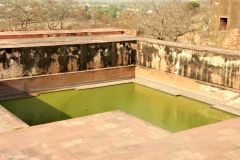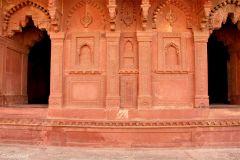Imagine what the Mughal emperors of India did at Fatehpur Sikri. They spent 15 years planning and building a brand new capital, only to abandon it after another 14 years.
The UNESCO World Heritage List includes more than a thousand properties with outstanding universal value. They are all part of the world’s cultural and natural heritage.
Official facts
- Country: India
- Date of Inscription: 1986
- Category: Cultural site
UNESCO’s World Heritage Centre’s short description of site no. 255:
Fatehpur Sikri is in the Agra District in the State of Uttar Pradesh. It lies on the edge of an artificial lake, on the slopping levels of the outcrops of the Vindhyan hill ranges. Known as the “city of victory”, it became capital under the Mughal emperor Akbar (1556-1605 AD).
Fatehpur Sikri was the first planned city of the Mughals with magnificent administrative, residential and religious buildings. It comprised palaces, public buildings, mosques, living areas for the court, the army, the servants of the king and an entire city. After they moved the capital to Lahore in 1585 AD, Fatehpur Sikri remained an area for temporary visits by the Mughal emperors.
My visit
One may ask why one should build a capital city only to leave it after a few years. The reason is two-fold. One is that the water reservoir was insufficient to uphold the needs of the court and soldiers. Second is that it was vulnerable due to its proximity to enemy territory. Poor planning aside, this is today a place on the Golden Triangle between Delhi, Jaipur and Agra. The Fatehpur Sikri offers splendid views and fascinating buildings.


























